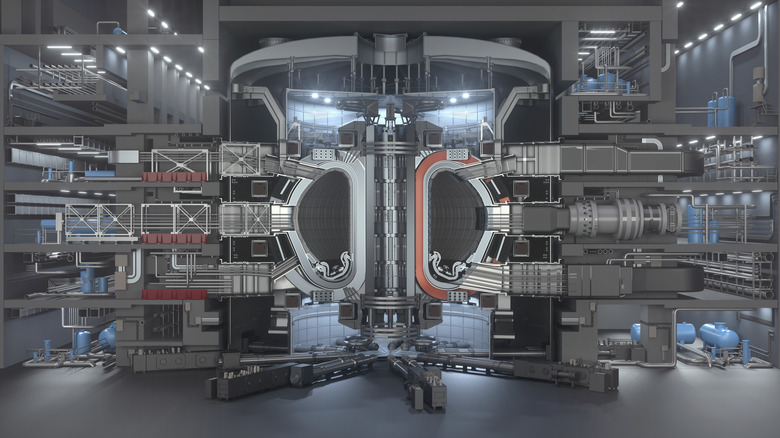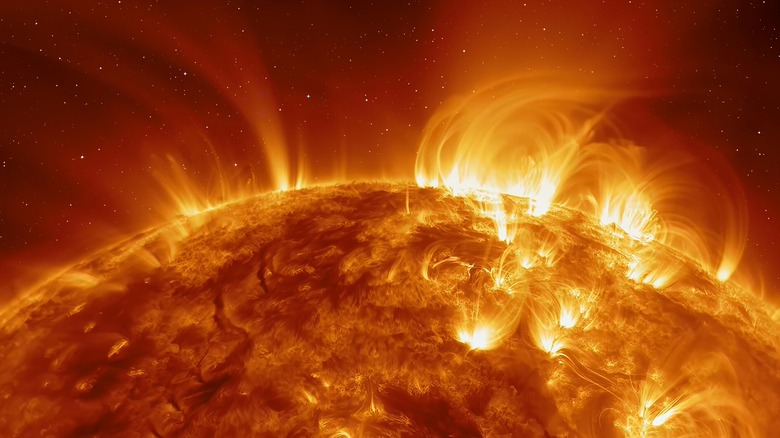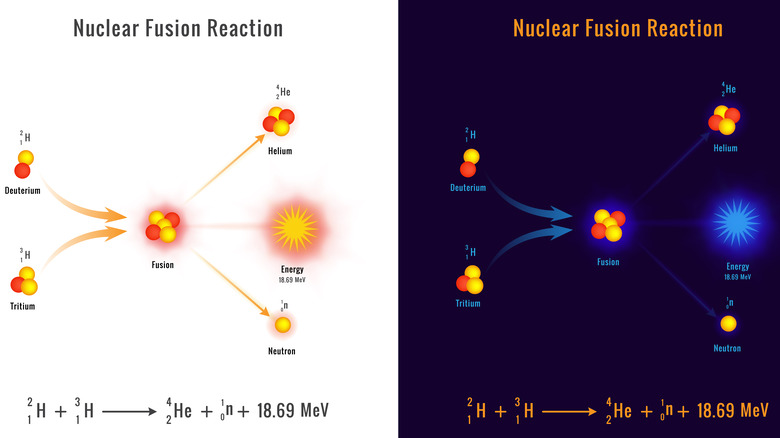The Man-Made Sun Outside Oxford That Broke A 1997 Nuclear Energy Record
The race to create an enormous source of clean safe energy in the form of nuclear fusion continues, and in the U.K., the Culham Centre for Fusion Energy has just leaped ahead. Firing up their reactor this month, the team has easily surpassed all previous energy records (via CNN).
At present, a number of top universities, such as MIT, are working with private sector firms to pioneer the complex technology that they hope will one day replace fossil fuels (via Financial Times). The dream of using Nuclear Fusion started as just a glimmer in the eyes of Soviet scientists, and although great progress has been made, it has become a tired cliché that the technology is always just a few years away.
Although the equipment is complex, the science of fusion is deceptively simple. Nuclear fusion is the opposite of nuclear fission — rather than splitting atoms apart, scientists want to smoosh hydrogen particles together, copying the process that happens when stars form. The energy released from such reactions is enormous and could one day give us unlimited clean energy — a tantalizing prospect in the era of high oil prices and runaway climate change.
Bringing the sun to Oxfordshire
The JET Tokamak reactor in Oxford is the largest fusion reactor in operation today, the combined efforts of an international group of scientists, per MIT News. The Tokamak runs on deuterium and tritium, special hydrogen isotopes which are abundant in the world around us and which should therefore be able to satiate our ravenous appetite for electricity (via the U.S. Energy Department).
The precious hydrogen plasma is contained within an electromagnetic field where it heats up to astonishing temperatures. The very center of this Earth-born star reaches over 15 million degrees centigrade, making it hotter than our own sun, according to The Daily Mail.
The Joint European Torus device located in Culham was able to create 59 million joules of energy when it was fired up this December. CNN reported that's about enough power to run an American household for half a day blasted out in just five fleeting seconds. The previous record set a quarter of a century ago, was just 21.7 million joules in four seconds.
How close are we to using fusion energy?
In general, 2022 has been a year of big firsts in the field of fusion energy. In Boston this September, scientists announced a breakthrough that improved the strength of their tokamak reactor's electromagnetic field (via The Financial Times). That same month, a South Korean reactor ran for a full 30 seconds, at 100 million degrees centigrade (via the Independent).
Finally, in California, in the same week the Oxford lab announced its big record, scientists at Lawrence Livermore National Laboratory declared they had achieved "ignition" for the first time (via The Guardian). In other words, their fusion reaction gave out more energy than it took in, a vital step forward making the process sustainable.
One big clue that we are nearing a time when viable fusion reactors will be a reality is the sudden influx of private investment in the field, per Utility Dive. The flurry of new money being pumped into gargantuan sun-making machines around the world could one day save our planet.


